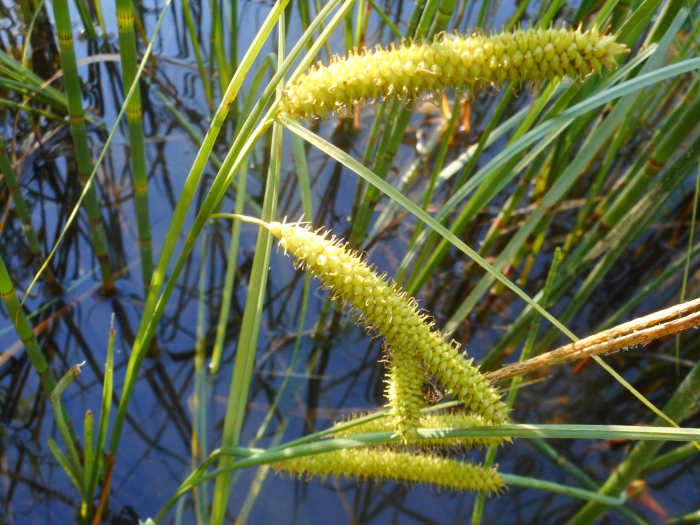Beaked Sedge
(Carex rostrata)
Beaked Sedge (Carex rostrata)
/
/

Eugene Popov
CC BY 4.0





































Estimated Native Range
Summary
Beaked Sedge is valued for its ability to thrive in wet conditions and is often used in rain gardens, water features, and as a ground cover in damp areas of the landscape. It is also beneficial for erosion control and provides habitat for wildlife. In cultivation, it requires consistently moist to wet soil conditions and can grow in full sun to full shade, making it versatile for various garden settings. While it prefers medium drainage, it can tolerate standing water. Beaked Sedge is relatively low-maintenance, but gardeners should be aware of its spreading nature, which can be aggressive in ideal conditions.CC BY-SA 4.0
Plant Description
- Plant Type: Grass
- Height: 0.5-3 feet
- Width: 1-3 feet
- Growth Rate: Moderate
- Flower Color: N/A
- Flowering Season: Summer
- Leaf Retention: Evergreen
Growth Requirements
- Sun: Full Sun, Part Shade, Full Shade
- Water: High
- Drainage: Medium
Common Uses
Bird Garden, Deer Resistant, Edible*Disclaimer: Easyscape's listed plant edibility is for informational use. Always verify the safety and proper identification of any plant before consumption., Low Maintenance, Water Garden
Natural Habitat
Native to bogs, fens, marshes, and wet meadows
Other Names
Common Names: Bottlebrush Sedge , Narrow-Leaved Beaked Sedge , Northern Yellow Lake Sedge , Rostrate Sedge , Swollen Beaked Sedge , Næb-Star , Schnabel-Segge , Pullosara , Carex Rostré , Laiche À Utricules Contractés En Bec
Scientific Names: Carex rostrata , Carex ampullacea , Carex rostrata f. rostrata , Carex ampullacea var. maxima , Carex inflata , Carex obtusangula , Carex rostrata f. sparangiformis , Carex xstenolepis , Trasus ampullaceus
GBIF Accepted Name: Carex rostrata Stokes